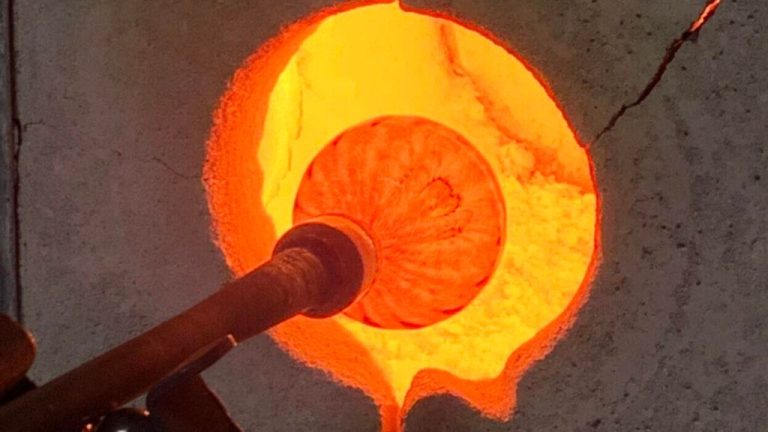Can You Use Air Dry Clay On A Mini Pottery Wheel?
Air dry clay is a type of modeling clay that dries and hardens at room temperature without the need for firing in a kiln. It is a popular and accessible clay material used by hobbyists, schools, and kids. Air dry clay comes in a variety of colors and can be shaped by hand or with tools once softened with water. When dry, it maintains its form and can be decorated further with paint or other media. Mini pottery wheels, also called hobby or craft pottery wheels, are small kick or electric powered spinning wheels designed for modeling with clay. Their compact size and low cost make them a fun introduction to wheel throwing pottery techniques. Using air dry clay with a mini pottery wheel allows beginners to practice centering, opening, lifting, and other skills in throwing pots and bowls without the complexity of dealing with firing finished pieces. The convenience and forgiving nature of air dry clay combined with the satisfying tactile experience of using a pottery wheel makes this a rewarding and creative craft.
Pros of Using Air Dry Clay on a Mini Wheel
One of the biggest benefits of using air dry clay on a mini pottery wheel is its convenience and accessibility. Air dry clay does not require firing in a kiln like traditional clay. This allows you to complete projects much more quickly from start to finish without having access to a kiln (The Pros and Cons of Working With Air Dry Clay, 2019). Air dry clay is readily available at most craft stores, making it easy to acquire. It is also very affordable compared to other clays. These factors make air dry clay a great choice for beginner potters or hobbyists who want to try making pieces on a mini wheel but don’t have the time, resources or space for firing clay.
Cons of Using Air Dry Clay on a Mini Wheel
One of the main downsides of using air dry clay on a mini pottery wheel is that it has limitations in detail and strength compared to clays that require firing in a kiln. Air dry clay is made of minerals, cellulose ether binders and softening chemicals which allow it to harden through evaporation without heat. This means the clay particles do not fuse together as strongly as they would under high heat in a kiln (The Pros and Cons of Working With Air Dry Clay). So intricate detailing and thin extremities can be challenging with air dry clay.
When air dry pieces are handled a lot or subjected to drops or other impacts, they may chip, crack, or break more easily than kiln-fired ceramic pieces. The clay remains somewhat fragile after drying, unlike pottery which becomes rock hard through firing. This limits the utility and durability of air dry clay artworks. Strength can be improved by using proper drying methods and handling pieces with care once dry, but there is a tradeoff between convenience and durability.
Techniques for Using Air Dry Clay on a Mini Wheel
When using air dry clay on a mini wheel, the centering and shaping techniques are similar to regular potter’s clay. However, there are some best practices to follow for getting the best results.
To center the clay on the wheel, start with a ball of clay and press it down firmly in the center of the wheel. Apply even pressure while slowly spinning the wheel to form a symmetrical flattened shape. Add water sparingly if the clay is sticking. Once centered, use your thumbs to create an indentation and shape the walls. According to The Pottery Wheel, air dry clay can be quite sticky compared to normal clay, so use water judiciously.
When shaping the clay, support the walls from inside and outside while continuing to spin the wheel. Move slowly and deliberately to maintain symmetry. Air dry clay dries faster than typical clays, so work efficiently. Create thinner walls than normal for lightweight pieces that won’t break when dry. Allow extra drying time before adding handles or embellishments.
Follow the basics of centering, opening, and raising the walls. But adjust your techniques as needed for the properties of air dry clay. With practice and observation of how the clay responds on the mini wheel, you can create beautiful and functional pottery.
Project Ideas
A mini pottery wheel opens up a world of creative possibilities with air dry clay. Here are some fun and simple project ideas to try:
Simple vessels: Make small bowls, cups, vases, and pots. These can be left plain or decorated. Simple vessels are great beginner projects and can be made in different sizes.
Jewelry: Craft earrings, pendants, beads, and rings. Let them air dry fully before wearing. Make matching sets as gifts for friends.
Decorations: Create tiny figurines, animals, shapes, letters, and signs to use as decor around the house. Ornaments and garlands made of air dry clay can be great for seasonal decorating.
With a mini wheel and air dry clay, you’re only limited by your creativity. The portability of a mini wheel means you can make small clay projects anywhere you have a flat surface. Have fun and don’t be afraid to experiment!
Troubleshooting Issues
Air dry clay is prone to cracking and warping as it dries due to shrinkage. Here are some tips to help avoid common problems when using air dry clay on a mini wheel:
To reduce cracking:
- Avoid making pieces that are too thick, which take longer to dry and are more prone to cracking. Keep pieces under 1/4 inch thick.
- Let pieces dry slowly and thoroughly. Drying too quickly can cause exterior drying faster than interior, leading to cracks. Allow 72+ hours.
- Consider adding a product like Darice’s Craft Bond adhesive additive to the clay, which can make it more flexible.
- Smooth over cracks gently with a damp sponge while drying.
- Once fully dry, sand cracks gently before painting.
To prevent warping:
- Keep pieces symmetrical and walls even thickness when sculpting.
- Let pieces dry completely on a flat surface rather than hanging.
- Avoid placing pieces directly in sunlight while drying.
- Reinforce piece with wire or other armature if making a more complex design.
Other issues like stickiness, softness, or flaking can indicate improper drying conditions. Review manufacturer instructions for drying time and environment.
Best Air Dry Clays for the Mini Wheel
When choosing an air dry clay for the mini wheel, you’ll want to look for a clay that is pliable and smooth enough to center and shape, but firm enough to hold its form as you work. The clay should also dry to a durable finished piece. Here are some top qualities to look for:
- Smooth, fine texture that is moist but not sticky or mushy
- Can be easily centered and shaped without excessive cracking or tearing
- Holds detail well and keeps its form as you work
- Dries to a hard, durable finish
- Won’t become brittle and crack excessively when drying

Based on these criteria, some excellent air dry clays for the mini wheel include:
Amaco Stonex – This natural clay alternative is smooth, fires durable, and works great for handbuilding and throwing on the wheel. It has good plasticity and comes in neutrals and gray.
Original Sculpey – A polymer clay that can be used on the mini wheel, bakes hard in a regular or toaster oven. Holds fine detail well.
Aktins Model Air – An extremely smooth and responsive air dry clay. Throws well on the wheel and finishes hard and durable.
Mini Wheel Recommendations
When selecting a mini pottery wheel to use with air dry clay, there are a few key features to consider:
Speed Settings – Look for a wheel with variable speed settings, as air dry clay requires slower speeds than traditional clay. Most mini wheels have settings ranging from 0-10 mph.
Size – Mini wheels meant for air dry clay are typically 6-8 inches in diameter. This provides enough space to center small amounts of clay.
Stability – Choose a sturdy plastic or metal mini wheel that will stay in place during throwing. The wheel should have rubber feet to prevent sliding.
Top Picks:
The Yofuly Mini Pottery Wheel is a top choice, with variable speed settings from 0-10 mph and a 6 inch wheel head. Reviewers praise its performance with air dry clays.
The PotterSmart Mini Ceramic Wheel is another good option. It has a sturdy metal frame and non-slip feet for stability when centering air dry clay.
For a more budget-friendly choice, the MCTA Mini Pottery Wheel has variable speeds and a 6 inch wheel to work with air dry clay. Just be cautious of stability when throwing.
Safety Tips
Air dry clay is generally considered non-toxic, however there are still some safety precautions to follow when using it[1].
To avoid breathing in clay dust, work in a well-ventilated area and wear a dust mask while sanding or cutting the clay. The dust particles can irritate lungs and airways. It’s also recommended to wet sand clay to minimize dust[1].
When using sculpting tools, work slowly and carefully to avoid injury. Rotating sculpture tools like mini pottery wheels can catch skin or clothing easily. Keep fingers away from moving parts and tie back long hair.
Store clay out of reach of small children and supervise older kids while sculpting. Some air dry clays can stain surfaces, clothing and skin, so cover work areas appropriately.
Although air dry clay is not fired at high temperatures like ceramic clay, avoid prolonged exposure to moisture which can degrade details and bonding strength over time. Seal completed sculptures with acrylic sealer spray if needed.
Always wash hands after working with clay. While non-toxic, air dry clay can still leave behind dirt and dust residue.
Following basic safety tips allows crafters and artists to enjoy sculpting safely with air dry clay.
[1] https://www.quora.com/Is-dust-from-airdry-clay-just-as-dangerous-as-dust-from-ceramic-clay-I-am-using-Das-airdry-clay-and-I-sanded-a-big-surface-leaving-a-very-dusty-mess-in-the-room-Now-I-wonder-if-I-need-to-worry-about-silica-or-what
Conclusion
To wrap things up, using air dry clay on a mini pottery wheel can produce fun and creative results with the right techniques and preparations. While air dry clay is more prone to cracking and peeling on a spinning wheel, taking it slowly, keeping your work area moist, and using smooth motions can help mitigate issues. Thicker, stronger clays like DAS and natural clay hold up better than flimsier clays. Having the right mini wheel that can turn smoothly at adjustable speeds is also key. With some practice and patience, air dry clay can make lovely miniature spun pieces. Just be sure to have reasonable expectations for the final dried products and enjoy the creative process. Air dry pottery on a mini wheel makes an engaging hands-on hobby or activity for all ages.





